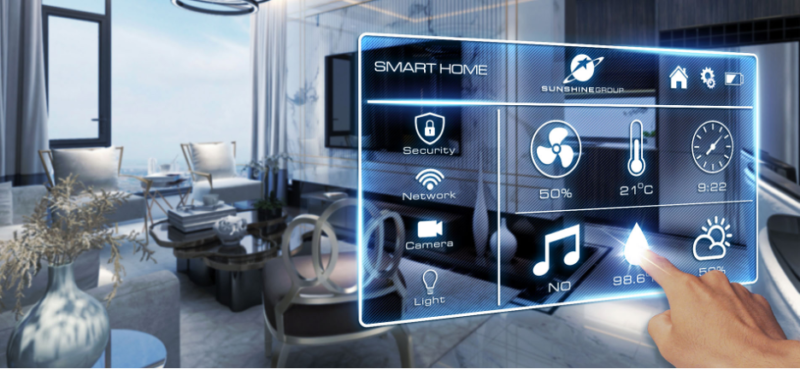In an era where technology continuously shapes our daily lives, smart home accessibility devices have emerged as a revolutionary solution for enhancing comfort and convenience for both homeowners and businesses. By seamlessly integrating various technologies into our homes and workplaces, these devices aim to provide an inclusive environment that caters to the needs of everyone, regardless of their abilities.
But what exactly are smart home accessibility devices, and how can they benefit you? This article delves into the myriad of ways these devices can transform your living and working spaces. We'll explore their potential, highlighting key features that make them indispensable for modern living.

What Are Smart Home Accessibility Devices?
Smart home accessibility devices are innovative technologies designed to make homes and businesses more accessible and user-friendly. These devices often include voice-activated assistants, automated lighting, smart thermostats, and intelligent security systems. Their primary goal is to improve the quality of life by simplifying daily tasks and providing greater control over the environment.
For instance, voice-activated devices like Amazon's Alexa or Google Home allow users to control various aspects of their home with simple voice commands. This is particularly beneficial for individuals with limited mobility or visual impairments, as it eliminates the need for physical interaction with devices.
The Benefits of Smart Home Accessibility Devices
Enhanced Convenience and Comfort
One of the most significant advantages of smart home accessibility devices is the convenience they offer. Imagine being able to adjust your thermostat, turn off lights, or lock doors without having to leave your couch. These devices simplify everyday tasks, making your home or business more comfortable and efficient.
For those interested in garden automation, smart home garden automation can further enhance convenience by automating watering schedules and monitoring plant health, allowing you to enjoy a well-maintained garden with minimal effort.
Increased Safety and Security
Smart home accessibility devices also contribute significantly to enhancing safety and security. With smart security systems, businesses and homeowners can monitor their properties remotely, receive alerts about unusual activities, and even interact with visitors through video doorbells. These features provide peace of mind, knowing that your premises are secure even when you're not there.
For more insights on how to ensure safety and security when you are away, check out this comprehensive checklist for smart home users heading out on vacation.
Energy Efficiency and Cost Savings
Many smart home accessibility devices are designed to optimize energy usage, leading to significant cost savings. Smart thermostats, for example, learn your schedule and preferences to adjust heating and cooling efficiently, reducing energy consumption. Similarly, automated lighting systems ensure that lights are only used when necessary, cutting down on electricity bills.
How to Choose the Right Devices for Your Needs
When selecting smart home accessibility devices, it's important to consider your specific needs and preferences. Start by identifying the areas of your home or business that could benefit most from automation and accessibility features. Consider factors such as ease of use, compatibility with existing systems, and the level of control you desire.
For a detailed guide on choosing the right smart home devices, you might find this smart home buying guide useful.
Integration and Compatibility
Ensuring that your chosen devices are compatible with each other and with existing systems is crucial. Look for devices that offer seamless integration, allowing you to control them through a single interface or app. This not only enhances user experience but also ensures that your smart home operates smoothly.
For those interested in aging in place, consider reading about the benefits of smart homes for aging in place, which highlights how these devices can support independence and safety for older adults.
Ease of Installation and Use
Choose devices that are easy to install and operate. Many smart home devices come with user-friendly interfaces and can be set up without professional assistance. However, if you prefer a more hands-off approach, consider opting for professional installation services to ensure everything is configured correctly.
Conclusion
In conclusion, smart home accessibility devices offer myriad benefits for homeowners and businesses alike. By enhancing convenience, safety, and energy efficiency, these devices not only improve quality of life but also provide significant cost savings. As technology continues to advance, the potential for smart home devices to transform our living and working environments will only grow.

FAQs
What are smart home accessibility devices?
Smart home accessibility devices are technologies designed to make homes and businesses more accessible and user-friendly, including voice-activated assistants, automated lighting, smart thermostats, and security systems.
How do smart home devices enhance safety?
Smart home devices enhance safety by allowing remote monitoring of properties, sending alerts about unusual activities, and enabling interactions with visitors through video doorbells.
Can smart home devices help save energy?
Yes, many smart home devices are designed to optimize energy usage, such as smart thermostats that adjust heating and cooling efficiently, leading to reduced energy consumption and cost savings.

